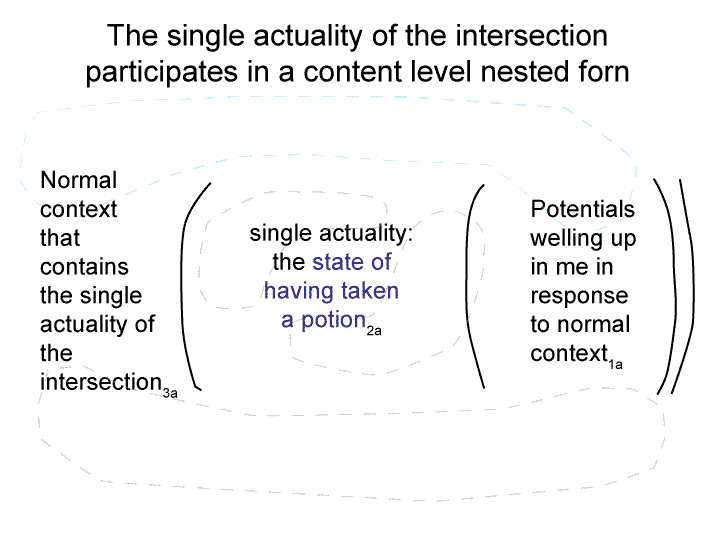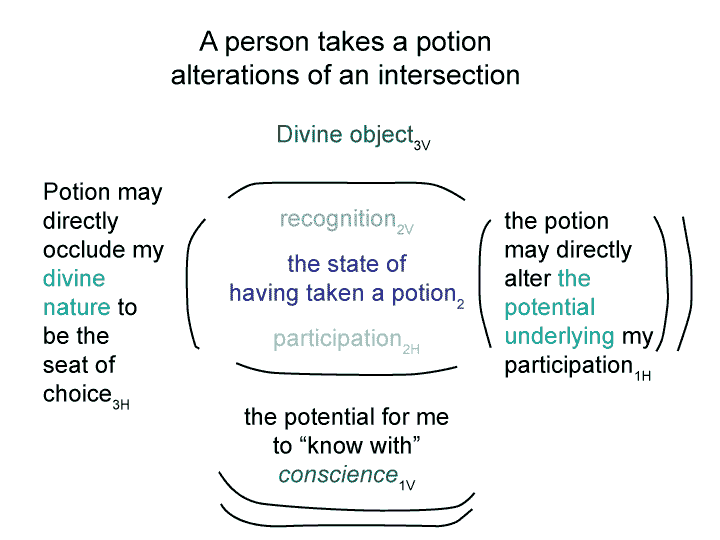Man and Sin by Piet Schoonenberg (1964) 2.1FF
Summary of text [comment] pages 69 through 71
[I am working with the intersection of recognition and participation (2.1 DJ, DL and DN).
‘The state of having take a potion’ seems comparable to ‘the state of grace’ or ‘the state of self-destruction’.
Furthermore, the potion is taken in a content-level normal context in order to actualize certain possibilities.
The action of the potion directly alters the horizontal axis, pertaining to the divine nature and human nature.
Then, the transformed horizontal axis indirectly alters the vertical axis.]


